Birthstones hold a special place in the hearts of many. What are birthstones? They are unique gems that represent a month of the year. Some months even have two or three gems representing them. Each birthstone has its own unique traits, characteristics, and significance.
January: Garnet
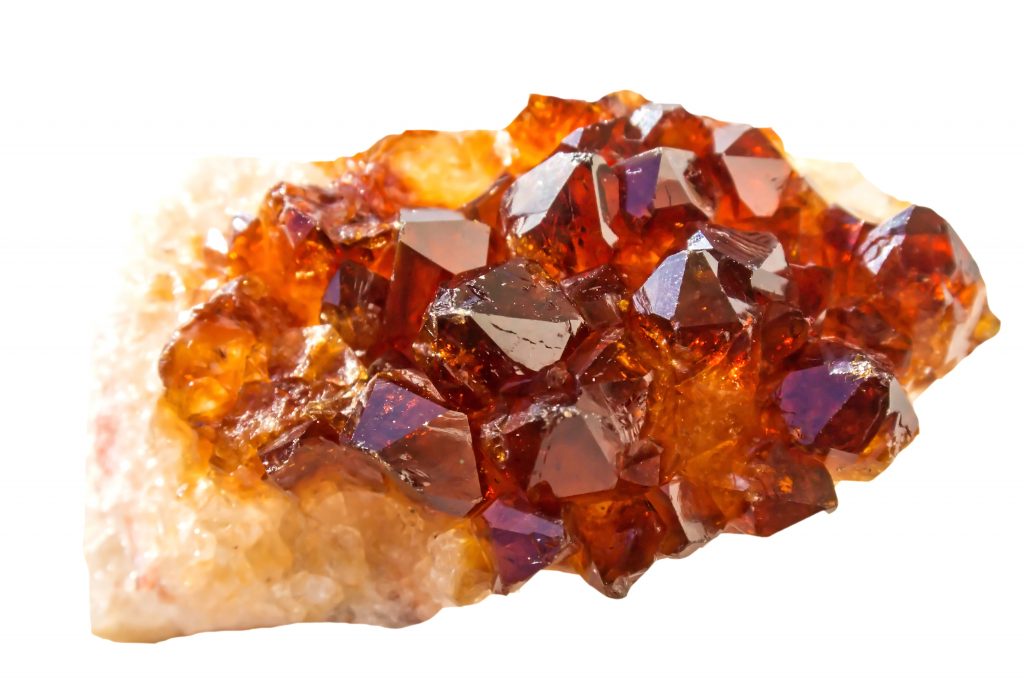
Garnet is the perfect gem to start the year off. Why? It comes in a rainbow of colors! What makes this stone so colorful are the multiple minerals that make it up. The makeup of a garnet includes a series of minerals with similar chemical properties but different compositions. The stones are typically desirable when they are red but can also be green, yellow, orange, brown, pink, purple, grey, and black.
The word Garnet comes from the Latin phrase garanatus, meaning seedlike. This reference is to the bright red color, which looks just like the seeds of a pomegranate. Garnet is a symbol of friendship and trust.
February: Amethyst
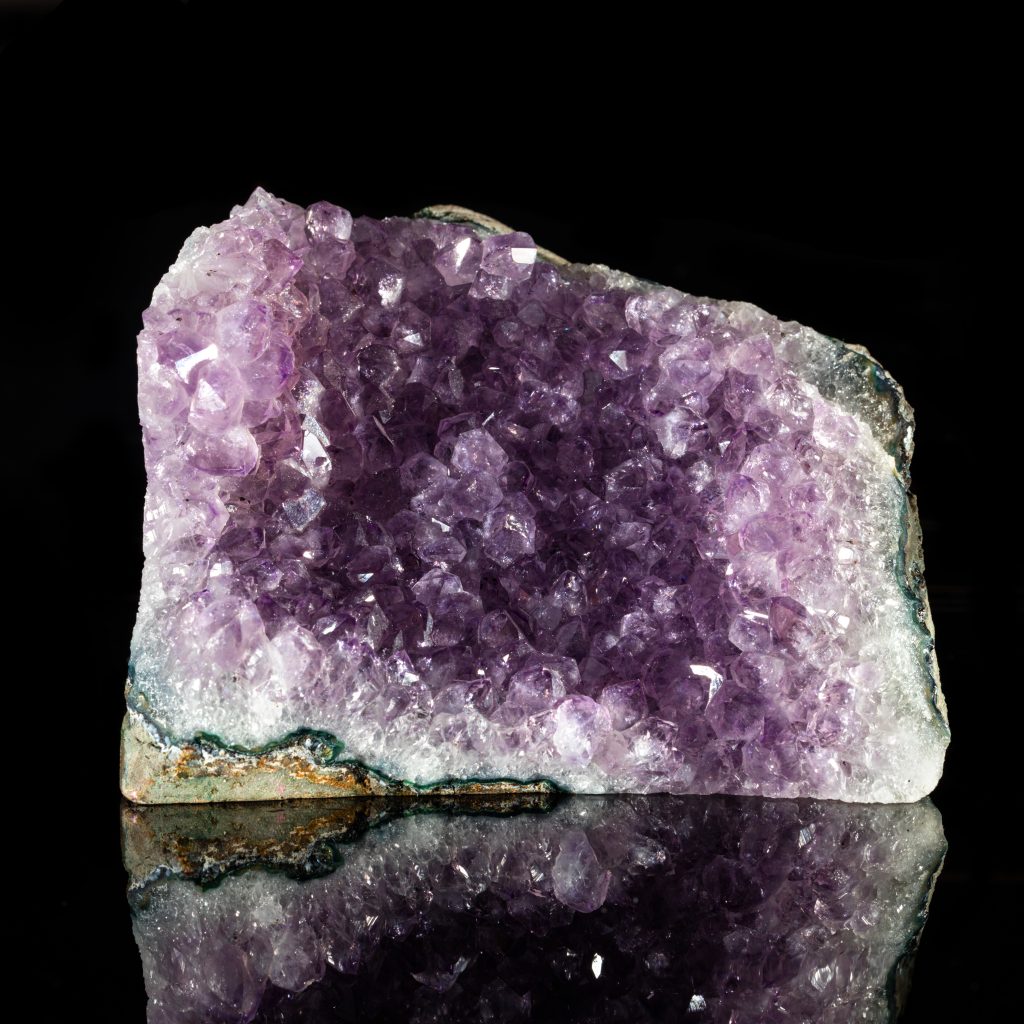
February’s birthstone is Amethyst. It’s a beautiful gem well-known for its color and healing properties. It’s highly valuable as a dark purple gem. You can also find them in other purple shades such as red, violet, and light.
The name Amethyst comes from the Ancient Greek word methustos, meaning intoxicated. The belief is that it protects people from drunkenness and overindulgence. This gem has a reputation for being an excellent healing stone. Amethyst holds high esteem for having the ability to heal someone’s physical body, mind, and emotions.
March: Aquamarine and Bloodstone
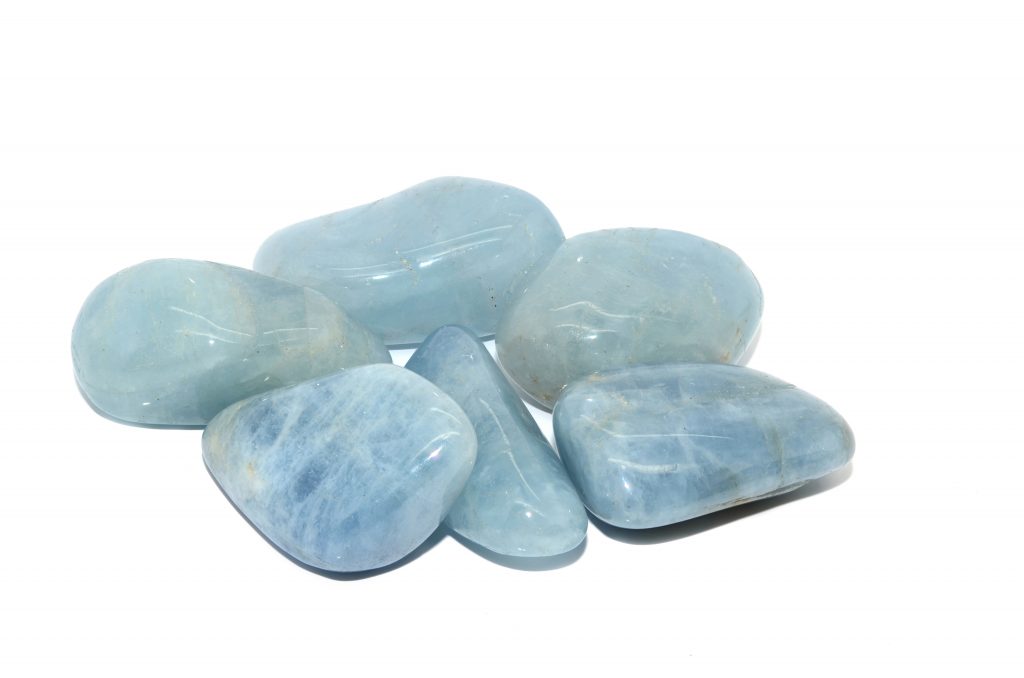
Two birthstones represent the month of March.
The first is aquamarine. Aquamarine is a blue-green gem that can be lighter or darker in color. The lighter gems are more common while the darker and purer blue gems are more valuable and prized.
The name aquamarine comes from the Latin word aqua, meaning water, and marina, meaning the sea. Ancient mariners spoke highly of the gem. They said that aquamarine gemstones could calm the waves of the sea and keep sailors safe. This stone is also a symbol of happiness for those in love.

March’s second birthstone is quite the opposite of aquamarine, the bloodstone. It doesn’t have the same brightness and color of aquamarine. Instead, it has a much more unique color and pattern. This gemstone is a deep green or almost black stone with red, brown, or orange spots. Another name for the bloodstone is “heliotrope”.
The word heliotrope comes from the Greek word helios, meaning sun, and trepein, meaning to attract. Ancient stories recount that bloodstones turn the sun red when placed in water. They are also thought to aid in healing one’s blood and organs as well as increase strength.
April: Diamond
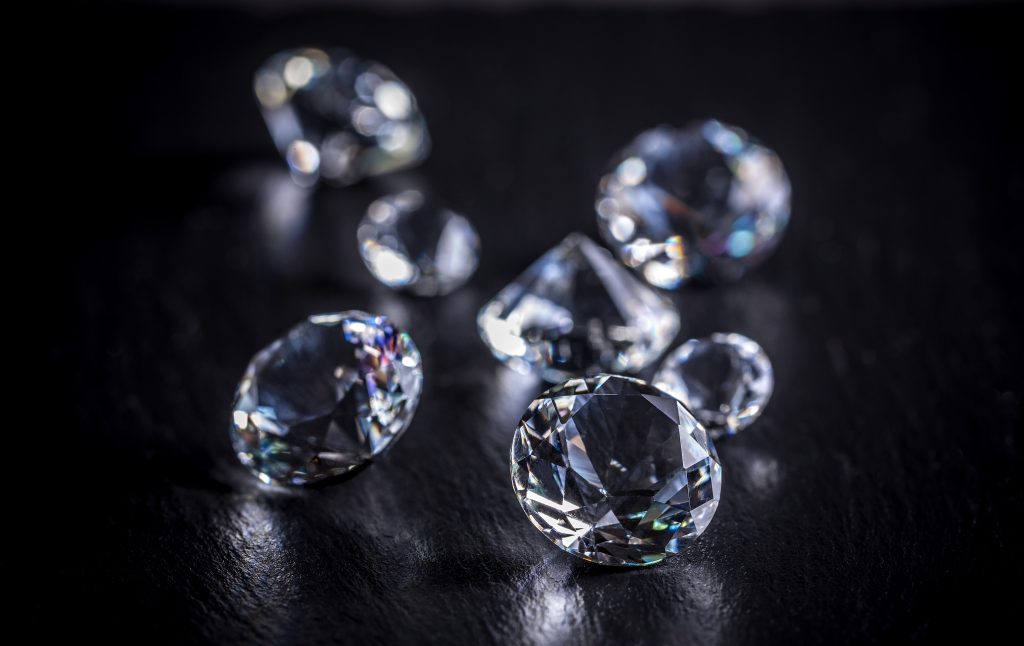
Perhaps the most famous birthstone and gem is the diamond. Diamonds come in various colors. These colors include white, blue, black, brown, yellow, orange, red, green, purple, and pink. The colors are due to impurities and defects that can make the diamond more or less valuable. The most valuable diamond has no hue or color due to it being structurally and chemically perfect.
The name diamond comes from the Greek word adamas, meaning invincible. Throughout history, the diamond has come to represent different things to different civilizations. However, it has almost always symbolized eternal love.
May: Emerald
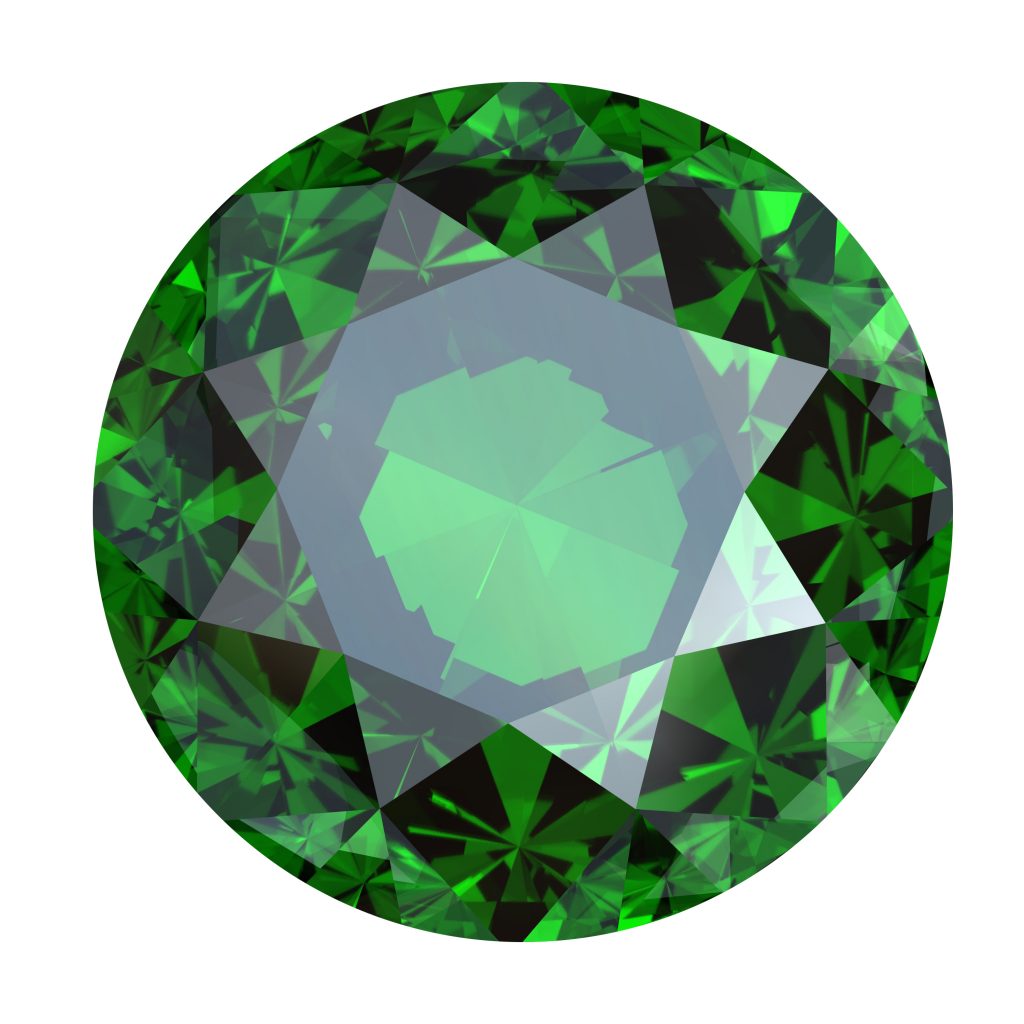
May’s birthstone is the emerald. The emerald is popular for its brilliant green color and feature in The Wizard of Oz. They are classically green and can range from yellow-green to blue-green.
The name emerald comes from the Greek word smaragdus, meaning green. It’s among the favored gemstones for royalty in the present day and ancient times. Emeralds symbolize eternal life. Ancient Egyptian royalty used to be buried with emeralds in the hope of bringing themselves back to life.
June: Pearl, Alexandrite, and Moonstone
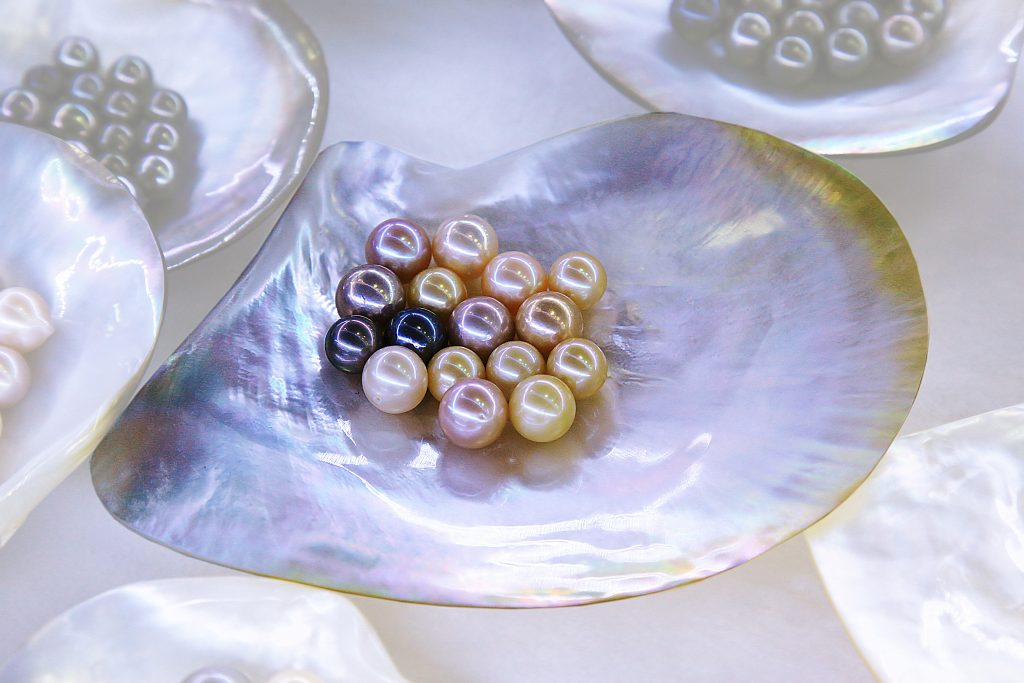
June is one of three months that is represented by three birthstones.
The first birthstone is the pearl. Pearls come in almost every color. They can even be multi-colored because of their unique makeup and formation process. It’s the only gemstone that is made by living creatures! They are made by mollusks. Factors that can contribute to the color of a pearl include the type of mollusk, the number of nacre layers, and the thickness of those nacre layers. Nacre is a material that is produced by the mollusk on their inner shell. It causes the pearl to be iridescent.
Where and why the name pearl came to be is a bit difficult to trace but it is generally believed to come from the Old French word perle. Perle is then derived from the Latin word perna, meaning leg. The reasoning behind this translation is unknown. The symbolism of pearls is complex. However, it is widely believed by many cultures to symbolize wisdom through experience.
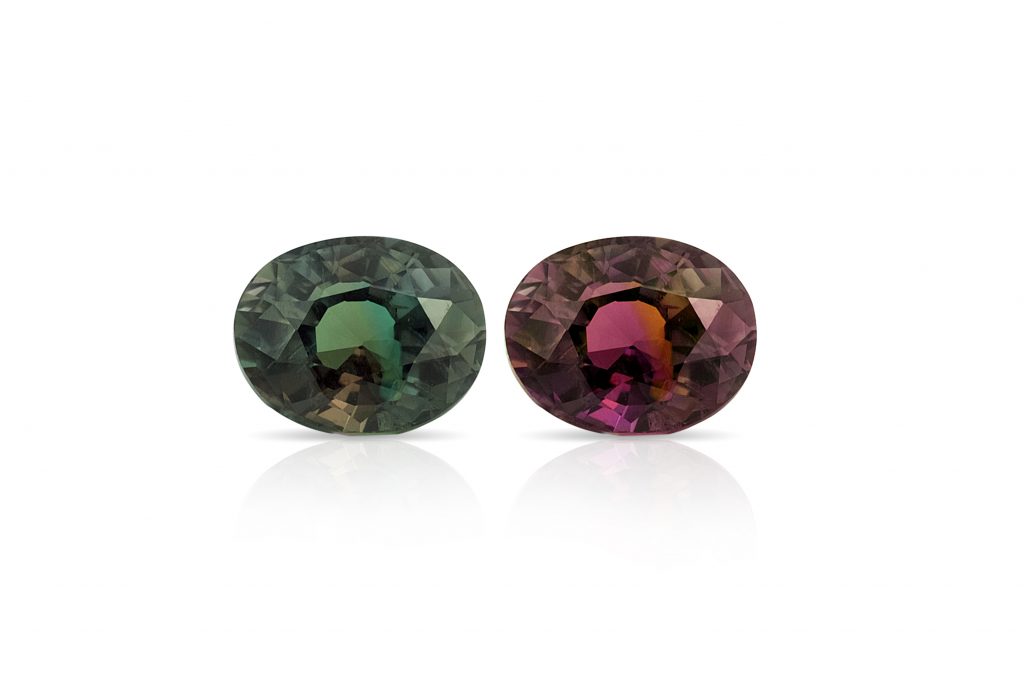
The second birthstone is Alexandrite. Alexandrite is made of a rare mineral variety called chrysoberyl. This unique mineral absorbs light in a complex way which causes a chameleon-like color change in the stone. It changes from shades of green in the daylight to shades of red under incandescent light. The stone is actually described as an “emerald by day, ruby by night.” It also can show different colors when viewed from different directions.
Alexandrite was discovered in Russia in the 1800s. It quickly became a symbol of good fortune in the country for a couple reasons. Stories say the stone was discovered the same day the Russian Czar Alexander II came of age. Alexandrite was named after him. The stone also happens to contain Russia’s national colors of red and green.
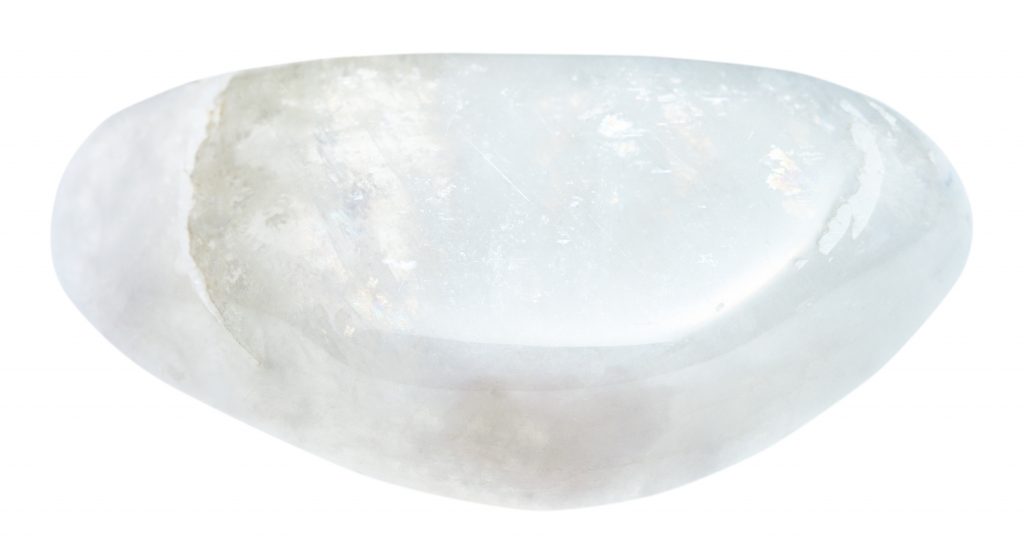
Moonstone is June’s third birthstone. It is also called hecatolite. The stone can be a variety of colors and range in clarity. It could be grey, pink, yellow, green, brown, or colorless and range from transparent to translucent. A highly valued moonstone is transparent with a blue shimmer.
Many people believed it was formed from moonbeams when it was discovered. A Roman historian named Pliny thought its color changed with the phases of the moon. He then coined the name moonstone. Moonstones have held a special place in the heart of many societies since its discovery. Some believe it contains healing powers in connection to water, some believed it embodies feminine energy, and others believed it brings good fortune.
July: Ruby

Rubies are an interesting gemstone in that without its distinctive red color, it would be called a sapphire. It can range from light pink to a dark red. The United States requires a ruby meet certain requirements before being labeled as such. If the stone is too light, it is considered a pink sapphire. Tone, saturation, and hue are taken into account. There is no set rule for when a stone crosses from being a ruby to a pink sapphire and vice versa. It basically comes down to where the stone was mined and the certification company.
The name ruby comes from the Latin word ruber, which means red. Many use the stone as a symbol for love and protection. Rubies have strong roots in history and stories because of their symbolism. Warriors of the past placed rubies over their hearts before they went into battle. Dorthy wore ruby slippers in “The Wizard of Oz” to protect her from the Wicked Witch of the West.
August: Peridot, Sardonyx, and Spinel
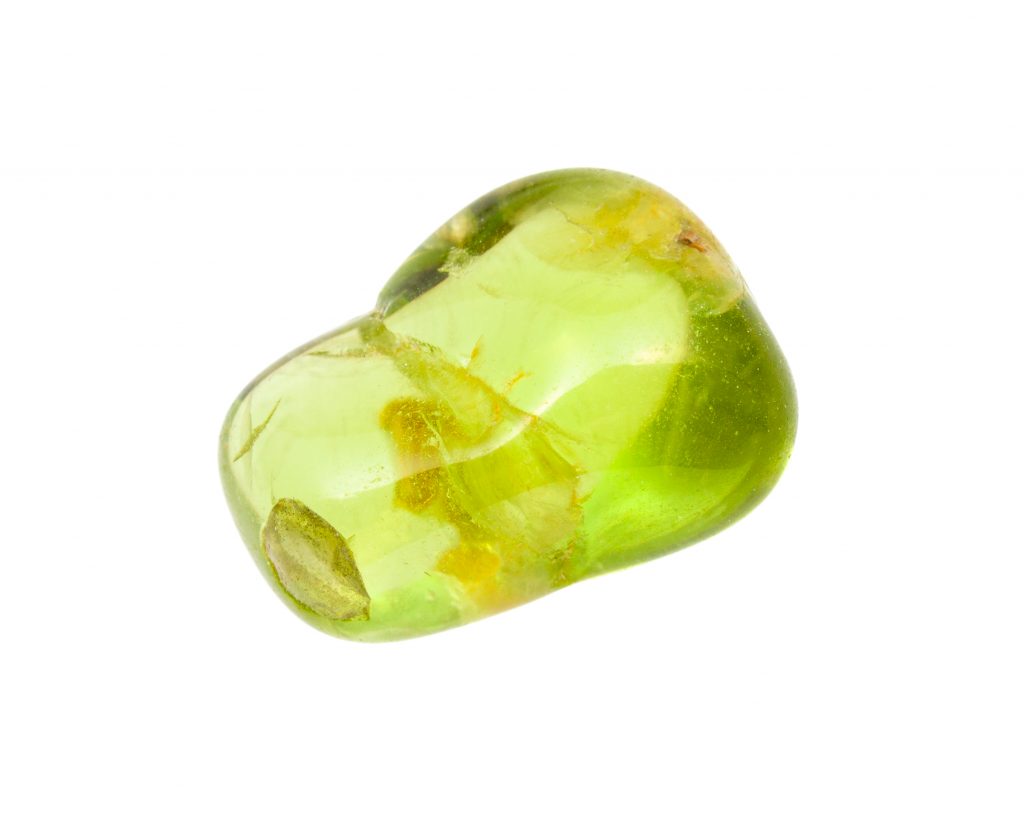
August is the second of three months that has three birthstones.
The first stone is Peridot. This stone is known for its olive green color but can range from pure to yellowish green. While they aren’t as popular as emeralds, peridots are loved for their similar color and affordability.
The name peridot comes from the French word peritot, meaning unclear. This is in reference to the, oftentimes, cloudiness of the stone. Ancient Egyptians called this stone the “gem of the sun” and believed it would protect anyone who wore it from terrors at night. It is also believed to symbolize the power of nature.
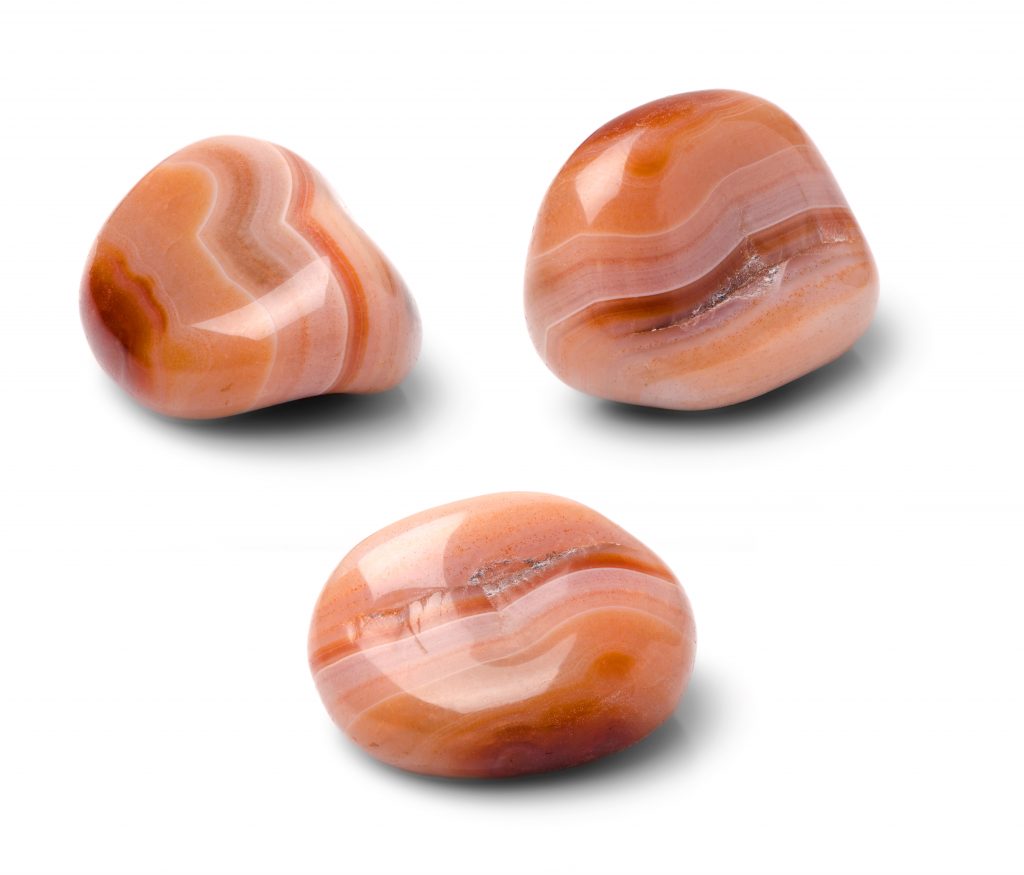
The second birthstone is saradonyx. Saradonyx is made of a mineral that contains layers of small fibers. This makes the stone’s appearance shades of red with whitish bands. They can also be found in colors such as brown, yellow, gray, purple, black, pink, and green.
This name saradonyx comes from the Greek word sard, meaning reddish brown, and onyx, meaning claw or fingernail. This is in reference to the veined appearance of the stone. Sardonyx often symbolizes protection. Historically, it’s popular for being affordable for anyone who wasn’t royal. Soldiers would wear the stone when they went into battle. People also used it for protection from others’ evils and to help with pain.
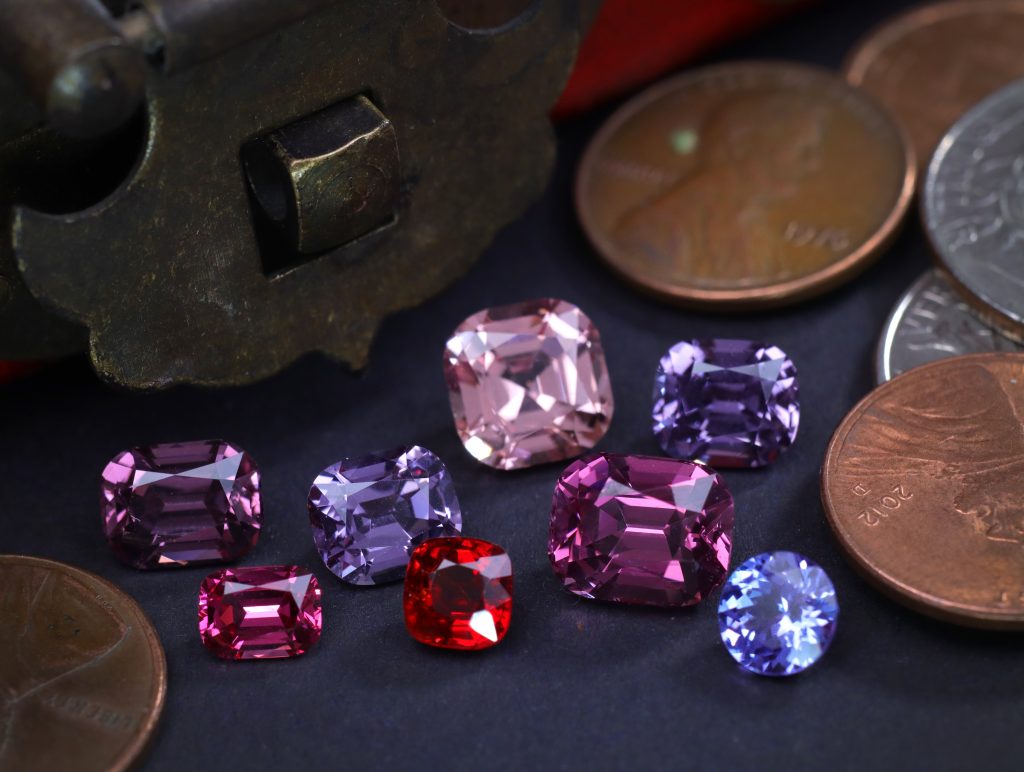
The third birthstone is Spinel. Spinels come in a variety of colors but are most valued when they are pure red and blue. Other colors include pink, orange, purple, grey, green, and colorless. This stone is often confused with the deep red ruby. Gem traders several hundred years ago didn’t even know there was a difference between them. However, Spinels and Rubies ultimately have different chemical and crystal structures making spinels a more affordable gemstone option.
The name spinel is thought to come from the Latin word spina, meaning spine or thorn. This is because the stone is often found in the form of sharp crystals. It is also thought to come from the Greek word spinther which means sparkling. Spinel symbolizes hope and revitalization.
September: Sapphire
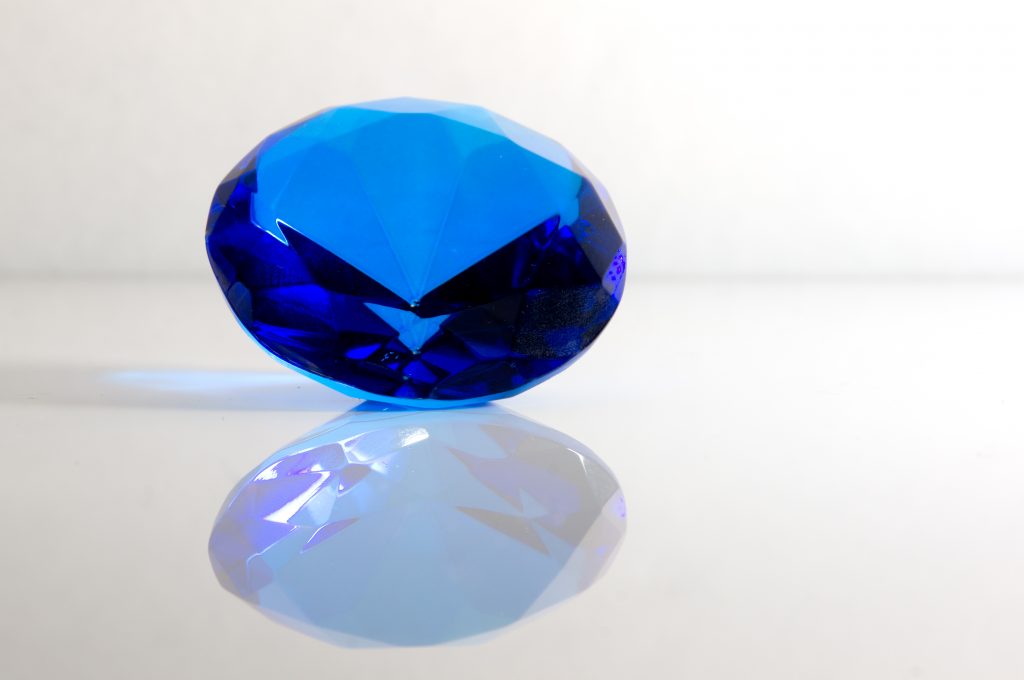
Sapphire is classically known as a brillant blue stone. What’s interesting about sapphires is that they can be any color except for red. Why? Red sapphires are considered rubies. Rubies and sapphires are both made of the same mineral corundum but are different because the red color in rubies comes from an impurity that other sapphires do not have. Sapphires are most valuable for their blue color. Any sapphire that is not blue (or red) is called a fancy sapphire. Other colors can include violet, purple, orange, yellow, white, green, and pink.
The name sapphire comes from the Latin word saphirus and the Greek word sappheiros meaning blue. It is known as the stone of wisdom. The bright blue color has led many cultures to associate sapphires with heaven, spirituality, and the enlightenment that comes from it. That enlightenment has made the stone popular among royalty.
October: Opal and Tourmaline
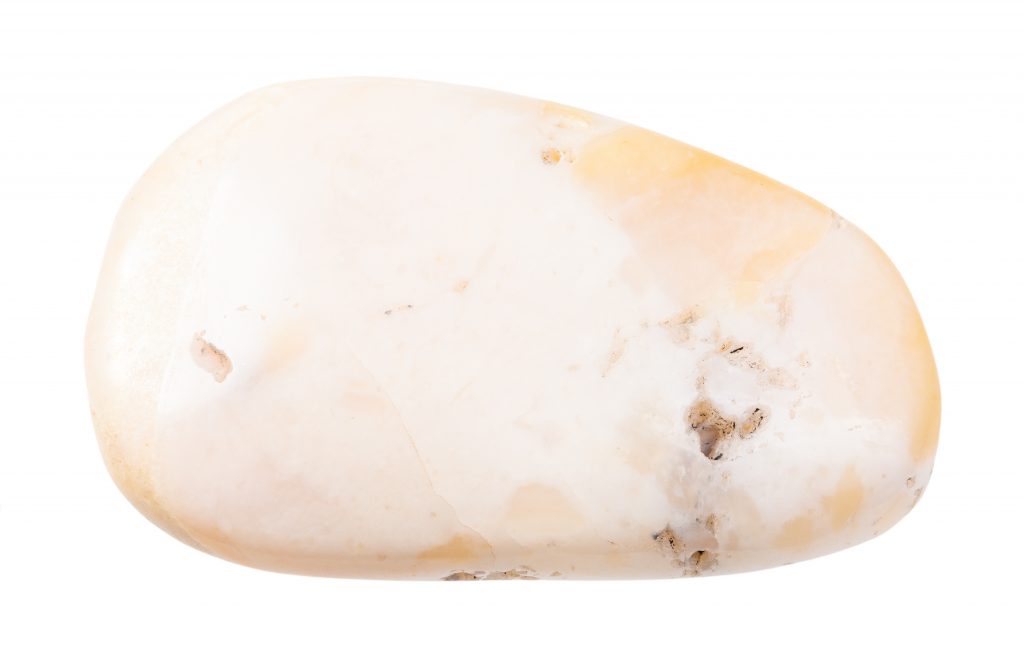
October has two birthstones.
Opal is the first birthstone of October. It’s unique for looking like a small, iridescent rainbow. This stone is attached to many ancient cultures because of its appearance. Ancient Indians believed that opals were the Goddess of the Rainbow turned to stone. Arabic legends say opals fell from the sky in bolts of lightning. The chemical structure and properties of the stone affect the way it takes in light. That’s the reason for its sparkling, multi-colored appearance.
The name opal comes from the Greek word opallios, meaning to see a change of color. Fittingly, opals are known to symbolize vision. They are historically used to treat eye injuries and disease. Some thought that the stone could render one invisible and became a favorite among thieves of the past.

Tourmaline is the second birthstone in October. A group of minerals with different chemical properties and structures make up this stone. That is why tourmaline can come in any color! It can even be multi-colored. The most expensive and valued among the colors are pure red, blue, and green.
The name tourmaline comes from the Sinhalese word toramalli (or “tura mali”) which means stone of mixed colors. Besides its status as the most colorful birthstone, tourmaline is also unique in that the minerals that make it are three-sided prisms. No other gemstone has this. This leads to some considering the stone to create strong energy pathways that lead to protection, purification, and clarity.
November: Topaz and Citrine
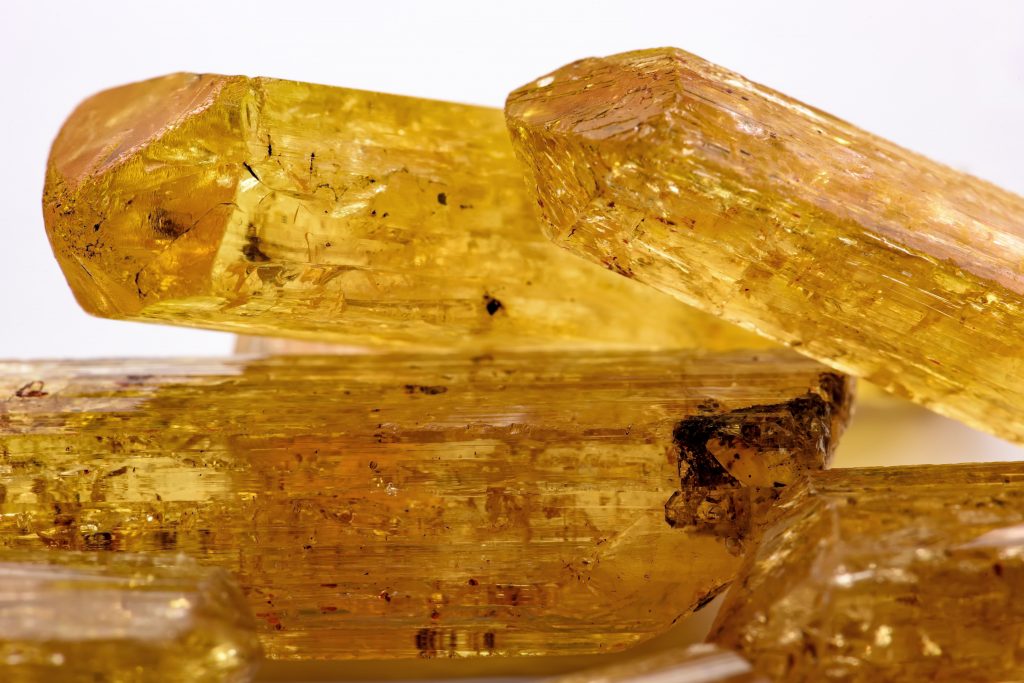
November has two birthstones.
The first birthstone is Topaz. It’s iconic for being a golden yellow gem. For thousands of years, people thought all yellow gemstones were topaz before it was discovered they can come in various colors. Other colors include orange, pink, blue, black, green, purple, red, brown, and colorless.
Where the name topaz comes from is a bit up in the air. It may come from the Greek word topazos, which is based on an island in the Red Sea named Topazios. It could also come from the Sanskrit word “tapaz,” meaning fire. Due to its golden color, many believe the gem attracts wealth and money. Others believe the golden color represents the sun and attracts good fortune and positive energy to those who wear it.
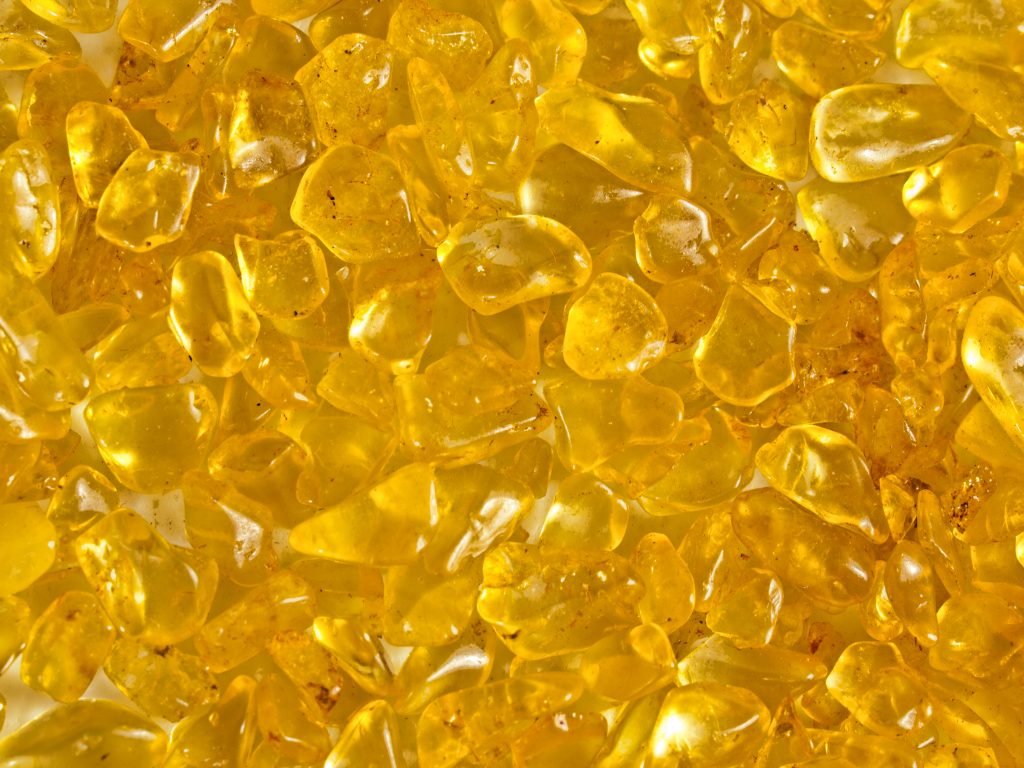
The second birthstone in November is Citrine. Like Topaz, this stone also comes in a beautiful yellow color. It can also be orange or brown. While they look similar, citrine and topaz stones are very different gem species with different traits. The mineral quartz makes up citrine. Quartz is more common than genuine topaz. This makes it more accessible and affordable. Topaz is also a harder stone than citrine which makes it more durable for jewelry.
The name for Citrine comes from the Latin word citrus and the French word citron both meaning lemon. Similar to topaz, many believe citrine to represent the sun because of its yellow color. Having the stone leads to vitality and warm feelings that ultimately boost your spirits.
December: Tanzanite, Zircon, and Turquoise
What makes December unique is that it not only has three birthstones but they are all blue as well!
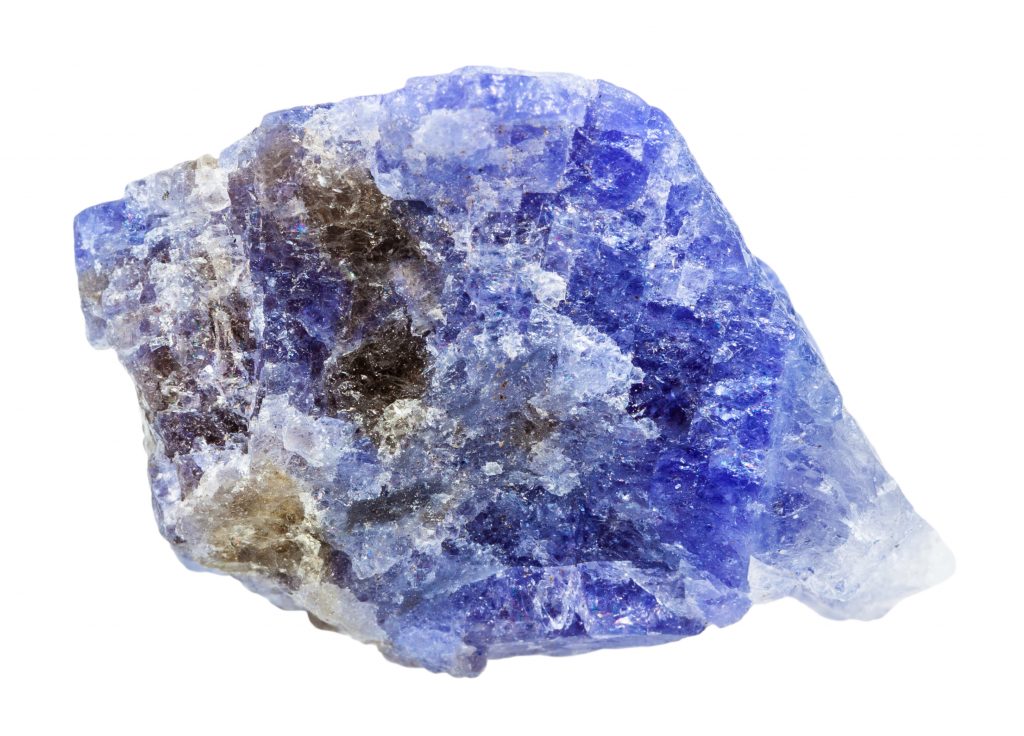
The first stone is Tanzanite. The mineral zoisite makes up Tanzanite. This mineral can come colorless, pink, green, yellow, red, brown, blue, and violet. However, the name “tanzanite” refers to the stone for its popular and valued blue tone.
While it’s not clear who first found tanzanite, that person discovered it in Tanzania, an eastern African country, in the 1960s. It was initially mistaken for blue sapphire and was later discovered to be blue zoisite. Eventually, it caught the attention of Tiffany & Co. The company realized the potential of the bluestone and renamed it tanzanite after its country of origin. Because the stone relatively new, there are not many legends or symbols attached to it.
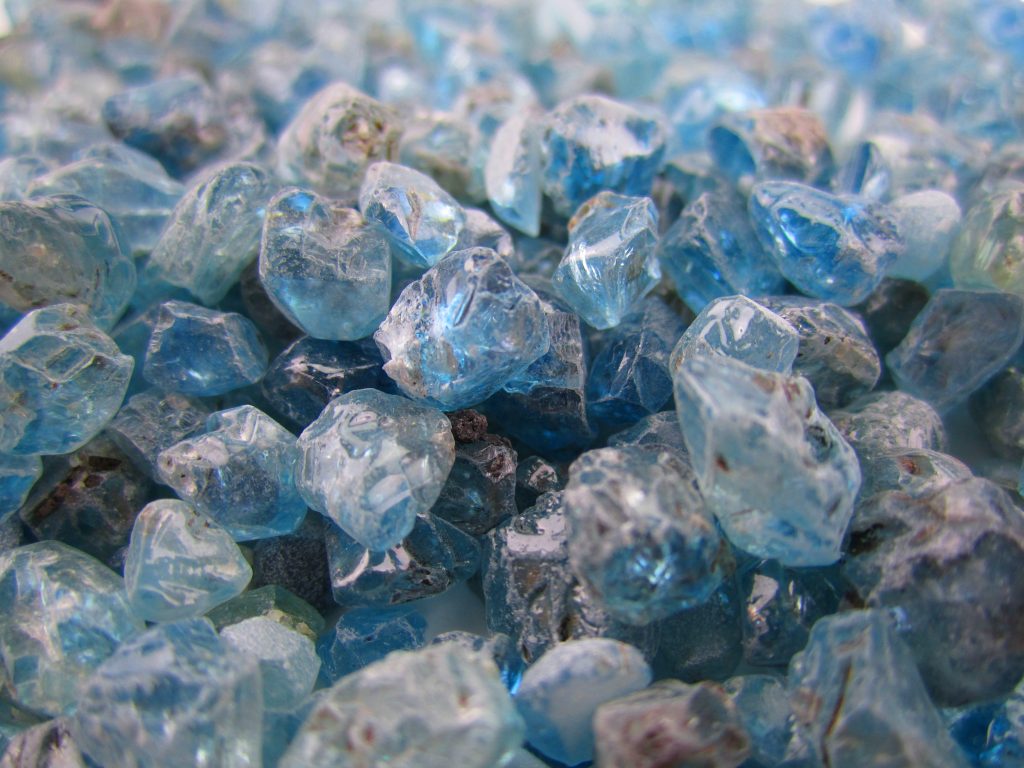
The second stone is zircon. Zircon is an affordable diamond simulant as colorless zircon looks and acts similar to colorless diamonds. However, zircon comes in many other colors as well. Earth tones such as brown-red are some of the most common colors. Other colors include orange, yellow, green, pink, purple, grey, and blue. Blue zircon specifically is the birthstone for December.
Most people believe the name for Zircon comes from the Persian word zargun which means gold-colored. This is one of the most ancient gemstones with zircon from Australia dating back 4.4 billion years! Ancients believed that this gem would help wearers sleep well and ward off evil spirits that would lead to nightmares. It would also bring the wearer prosperity, honor, and wisdom.
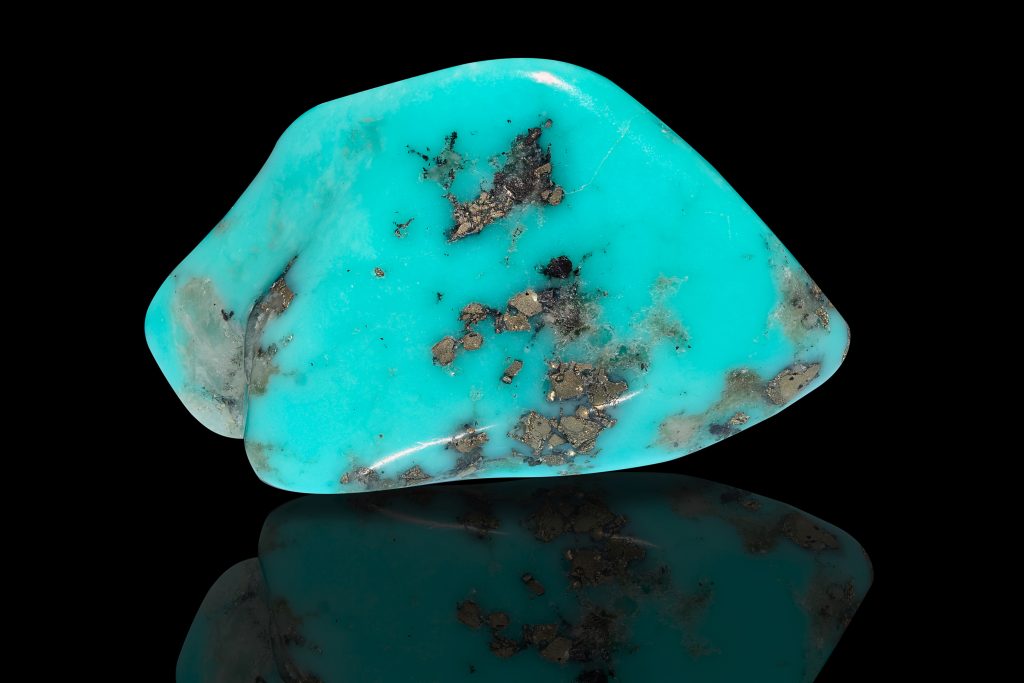
The third stone is turquoise. This gemstone is famous for its light blue color. In fact, the gemstone is so famous for its color that it shares a name with anything that has a similar striking shade of blue. Besides light blue, turquoise can also come in other shades of green-blue with some stones having black or brown veins.
The name Turquoise originates from traders who passed through Turkey to bring the gemstone to France (and other European countries). The French referred to the stone as pierre tourques which means Turkish stone. The vibrant color of turquoise has an impact on different cultures across time. Native Americans saw the stone as representing water, the earth, and life. Persians believed the stone to represent heaven. In general though, many people feel turquoise connects the wearer with the earth and other natural life.

Tacoma Jewelry Store
We buy & sell diamond engagement & wedding rings, gold, diamonds & Rolex.